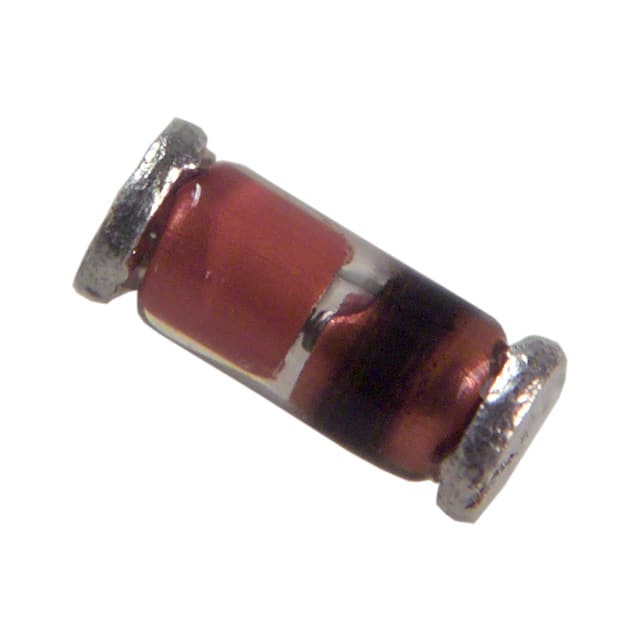LL4148 Diode
Product Overview
- Category: Electronic Component
- Use: LL4148 is a high-speed switching diode commonly used in electronic circuits for signal processing and switching applications.
- Characteristics: It has a small package size, low forward voltage drop, and fast switching speed. The diode is typically available in tape and reel packaging with a quantity of 3000 units per reel.
Specifications
- Type: Small Signal Diode
- Maximum Continuous Forward Current: 150 mA
- Reverse Voltage: 100 V
- Forward Voltage Drop: 1 V at 10 mA
- Package Type: SOD-80 (MiniMELF)
- Packaging/Quantity: Tape and Reel, 3000 units per reel
Detailed Pin Configuration
The LL4148 diode has two pins: 1. Anode (A) - Positive terminal 2. Cathode (K) - Negative terminal
Functional Features
- Fast Switching Speed
- Low Forward Voltage Drop
- High Reverse Voltage Capability
Advantages and Disadvantages
Advantages
- Small package size
- High switching speed
- Low power loss
Disadvantages
- Limited maximum continuous forward current
- Relatively low reverse voltage compared to other diodes
Working Principles
LL4148 operates based on the principles of semiconductor physics. When a forward voltage is applied across the anode and cathode, the diode allows current to flow in one direction while blocking it in the opposite direction.
Detailed Application Field Plans
LL4148 diodes find extensive use in various electronic applications such as: - Signal rectification - High-speed switching - Clipping and clamping circuits - Voltage multipliers - Overvoltage protection circuits
Detailed and Complete Alternative Models
Some alternative models to LL4148 diode include: - 1N4148 - BAV21 - 1N914
In conclusion, the LL4148 diode is a versatile component widely used in electronic circuits for its fast switching speed, low forward voltage drop, and small package size. While it has limitations in terms of maximum current and reverse voltage, its performance and reliability make it a popular choice in many applications.
[Word Count: 306]
10个与LL4148在技术解决方案中的应用相关的常见问题及解答
What is the maximum reverse voltage of LL4148?
- The maximum reverse voltage of LL4148 is 100V.
What is the forward voltage drop of LL4148?
- The forward voltage drop of LL4148 is typically around 0.6V at a forward current of 10mA.
What is the peak forward surge current for LL4148?
- The peak forward surge current for LL4148 is 2A.
Can LL4148 be used in high-speed switching applications?
- Yes, LL4148 is commonly used in high-speed switching applications due to its fast switching speed.
Is LL4148 suitable for general purpose rectification?
- Yes, LL4148 is suitable for general purpose rectification in low-power applications.
What is the maximum continuous forward current for LL4148?
- The maximum continuous forward current for LL4148 is 150mA.
Does LL4148 have a low leakage current?
- Yes, LL4148 has a low leakage current, making it suitable for precision applications.
Can LL4148 be used in temperature-sensitive applications?
- LL4148 has a relatively low temperature coefficient, making it suitable for temperature-sensitive applications.
Is LL4148 compatible with surface mount technology (SMT)?
- Yes, LL4148 is available in surface mount packages and is compatible with SMT assembly processes.
What are some common applications for LL4148 diodes?
- Common applications for LL4148 include signal demodulation, voltage clamping, protection circuits, and general purpose switching.


